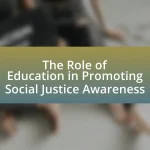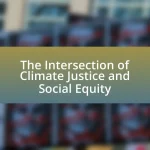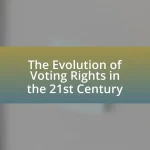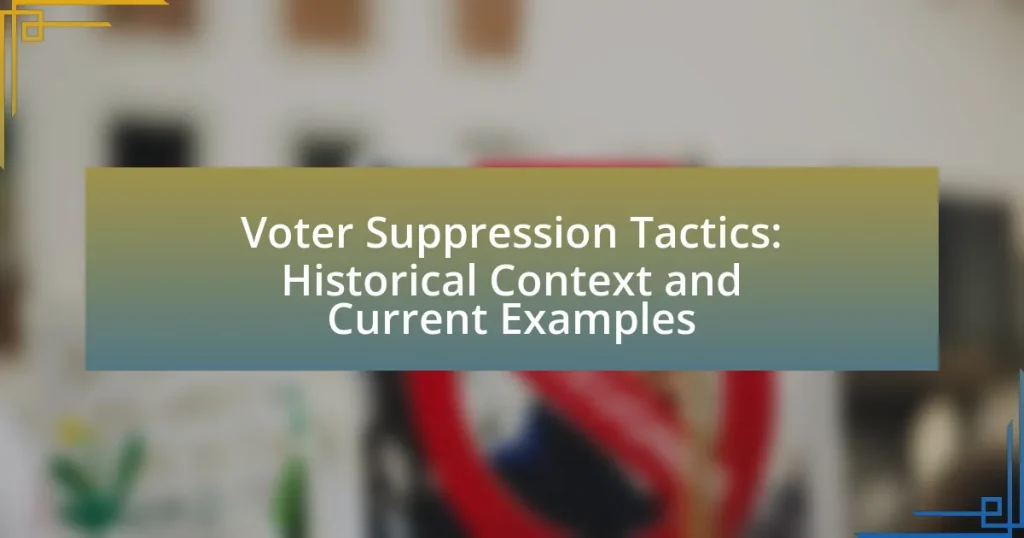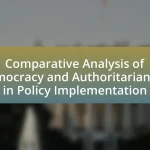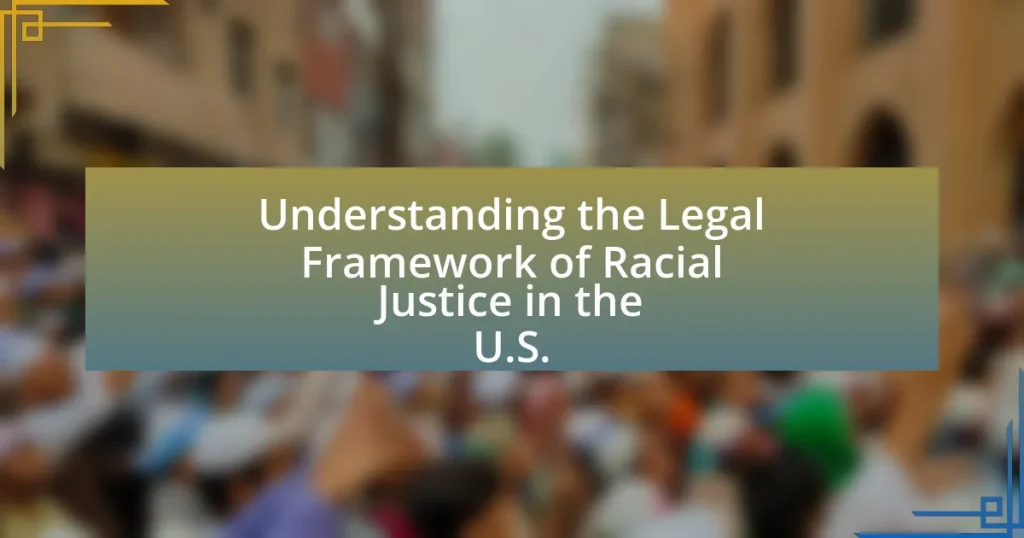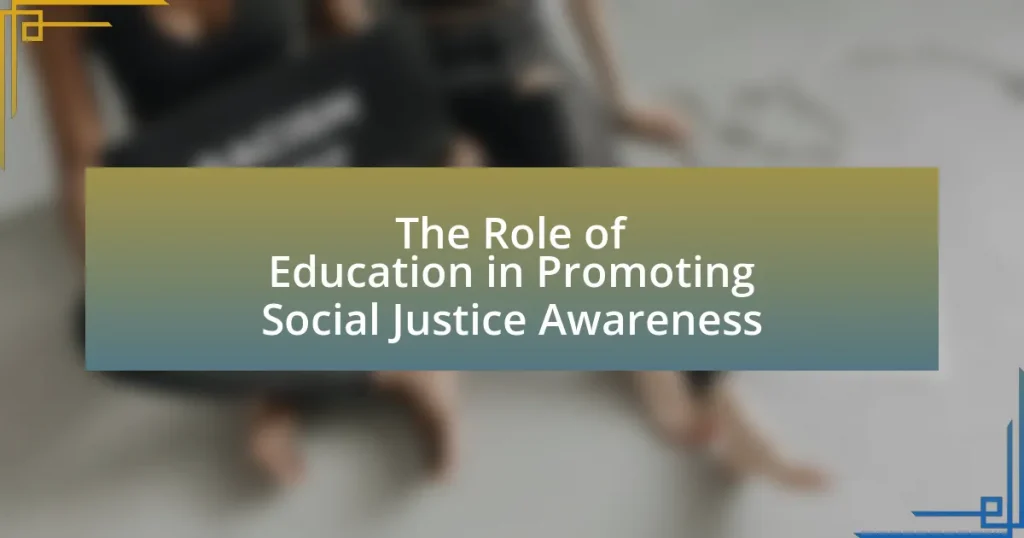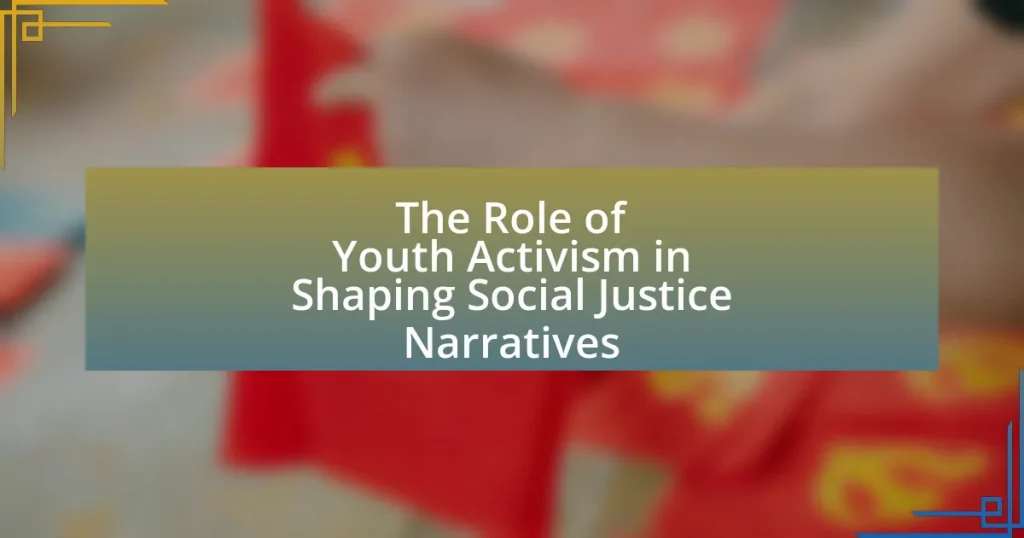Voter suppression tactics refer to strategies designed to discourage or prevent specific groups from voting, including strict voter ID laws, purging voter rolls, and limiting polling places. Historically, these tactics have evolved from overt methods like literacy tests and poll taxes to more subtle forms that disproportionately affect minority and low-income populations. The article examines the historical context of voter suppression in the United States, including the impact of the Voting Rights Act of 1965 and subsequent legal challenges that have allowed for the resurgence of restrictive measures. It also highlights current examples of voter suppression tactics, their effects on voter turnout, and the ethical implications of these practices in democratic societies. Additionally, the article discusses community responses, grassroots movements, and the role of technology in combating voter suppression.
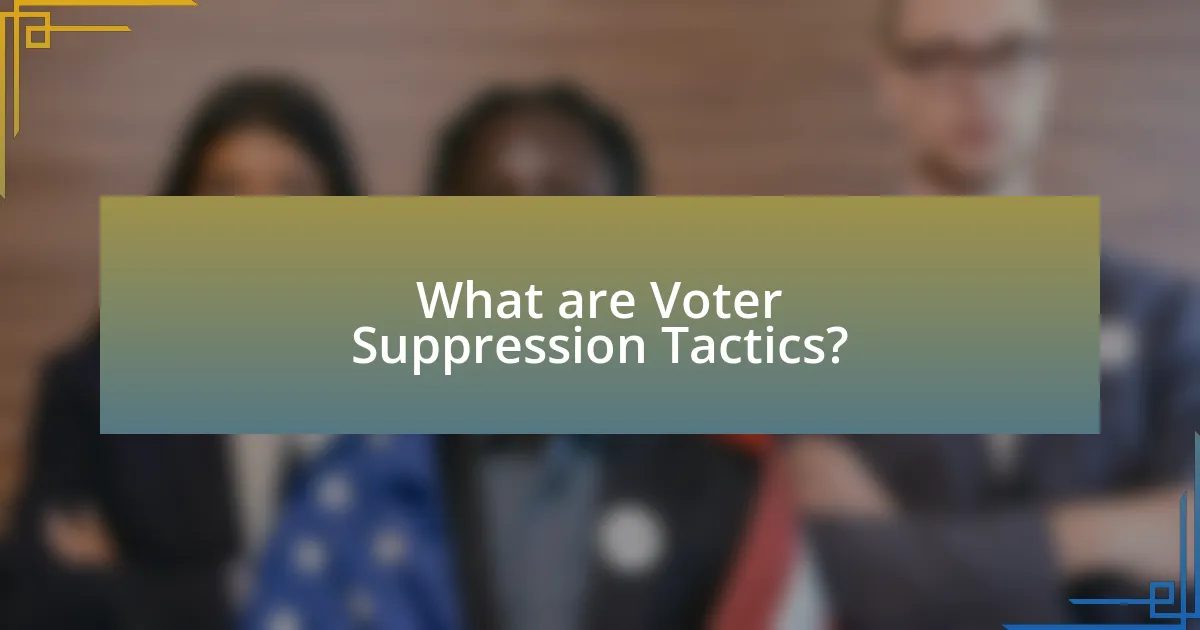
What are Voter Suppression Tactics?
Voter suppression tactics are strategies employed to discourage or prevent specific groups of people from voting. These tactics can include strict voter ID laws, purging voter rolls, limiting polling places, reducing voting hours, and implementing onerous registration requirements. For instance, a study by the Brennan Center for Justice found that states with strict voter ID laws saw a significant decrease in voter turnout, particularly among minority groups. Additionally, the U.S. Commission on Civil Rights reported that voter roll purges disproportionately affect African American and Latino voters, further illustrating the impact of these suppression tactics on electoral participation.
How have voter suppression tactics evolved over time?
Voter suppression tactics have evolved from overt methods, such as literacy tests and poll taxes, to more subtle forms, including voter ID laws and purging voter rolls. Historically, tactics like literacy tests were used in the Jim Crow era to disenfranchise African American voters, while poll taxes imposed financial barriers to voting. In recent decades, voter ID laws have emerged, requiring specific forms of identification that disproportionately affect minority and low-income populations. Additionally, the practice of purging voter rolls has increased, often targeting individuals based on questionable criteria, which can lead to eligible voters being removed without their knowledge. These changes reflect a shift from explicit discrimination to more systemic and bureaucratic methods of limiting access to the electoral process.
What historical events have shaped current voter suppression tactics?
The historical events that have shaped current voter suppression tactics include the Reconstruction era policies, the Jim Crow laws, and the Voting Rights Act of 1965. Reconstruction policies aimed to integrate formerly enslaved individuals into the political system but faced significant backlash, leading to the establishment of Jim Crow laws that enforced racial segregation and disenfranchised Black voters through literacy tests, poll taxes, and other discriminatory practices. The Voting Rights Act of 1965 sought to eliminate these barriers, yet subsequent Supreme Court decisions, such as Shelby County v. Holder in 2013, weakened its provisions, allowing states to implement new voter ID laws and other restrictive measures that disproportionately affect minority populations. These historical precedents illustrate how systemic racism and legal changes continue to influence contemporary voter suppression tactics.
What role do laws and policies play in voter suppression?
Laws and policies play a significant role in voter suppression by establishing barriers that disproportionately affect specific groups of voters. For example, laws requiring voter identification can disenfranchise individuals who lack the necessary documents, often impacting minorities and low-income populations. According to a 2018 study by the Brennan Center for Justice, states with strict voter ID laws saw a decrease in voter turnout by as much as 2-3% among affected demographics. Additionally, policies that limit early voting or reduce polling places can create long lines and accessibility issues, further suppressing voter participation. These legislative measures are often justified under the guise of preventing fraud, despite evidence showing that voter fraud is exceedingly rare in the United States.
Why are voter suppression tactics significant in democratic societies?
Voter suppression tactics are significant in democratic societies because they undermine the fundamental principle of equal participation in the electoral process. These tactics, which can include measures such as strict voter ID laws, purging voter rolls, and limiting polling places, disproportionately affect marginalized groups, thereby skewing election outcomes and eroding public trust in democratic institutions. Historical evidence, such as the Voting Rights Act of 1965, highlights the ongoing struggle against voter suppression, as it was enacted to combat discriminatory practices that disenfranchised African American voters. Studies have shown that states with stricter voting laws often see lower turnout rates among minority populations, further illustrating the detrimental impact of these tactics on democracy.
How do these tactics impact voter turnout and election outcomes?
Voter suppression tactics significantly decrease voter turnout and can alter election outcomes. For instance, measures such as strict voter ID laws and purging voter rolls disproportionately affect minority and low-income populations, leading to lower participation rates among these groups. A study by the Brennan Center for Justice found that states with strict voter ID laws saw a 2-3% drop in turnout, particularly among African American voters. Additionally, historical examples, such as the implementation of literacy tests and poll taxes in the Jim Crow era, demonstrate how these tactics have historically suppressed votes and influenced election results by disenfranchising large segments of the population.
What are the ethical implications of voter suppression?
Voter suppression raises significant ethical implications, primarily undermining democratic principles and disenfranchising marginalized populations. This practice violates the ethical tenet of fairness, as it disproportionately affects low-income individuals, racial minorities, and young voters, thereby skewing electoral outcomes. Historical evidence, such as the Voting Rights Act of 1965, highlights systemic efforts to suppress votes, which were deemed unethical due to their discriminatory nature. Furthermore, studies indicate that voter ID laws and purging voter rolls can lead to millions of eligible voters being excluded, raising questions about the integrity of democratic processes. The ethical ramifications extend to societal trust in governance, as widespread voter suppression can erode public confidence in electoral legitimacy and civic engagement.
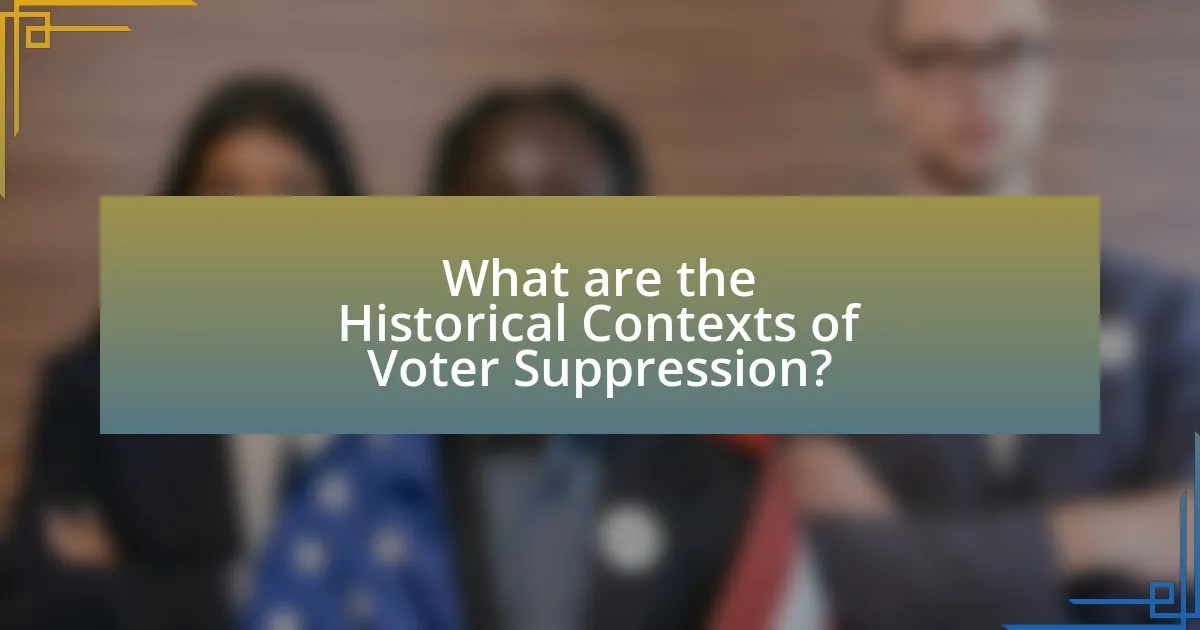
What are the Historical Contexts of Voter Suppression?
Voter suppression has historical contexts rooted in systemic racism and political power struggles, particularly in the United States. Following the Civil War, the Reconstruction era saw the implementation of laws such as the Voting Rights Act of 1965, which aimed to eliminate barriers to voting for African Americans. However, tactics like literacy tests, poll taxes, and intimidation were employed to disenfranchise Black voters and maintain white supremacy. For instance, the Supreme Court’s decision in Shelby County v. Holder (2013) invalidated key provisions of the Voting Rights Act, leading to a resurgence of voter suppression tactics in various states. These historical contexts illustrate a persistent effort to control electoral outcomes by limiting access to the ballot for marginalized groups.
What major historical voter suppression tactics have been used in the United States?
Major historical voter suppression tactics used in the United States include literacy tests, poll taxes, and voter intimidation. Literacy tests were implemented in many Southern states after the Reconstruction era to disenfranchise Black voters, often with unfair and confusing questions. Poll taxes required individuals to pay a fee to vote, disproportionately affecting low-income citizens, particularly African Americans. Voter intimidation, including threats and violence at polling places, was widespread during the Jim Crow era, aimed at discouraging Black citizens from exercising their voting rights. These tactics were part of a broader system of racial discrimination that sought to maintain white supremacy in the electoral process.
How did Jim Crow laws contribute to voter suppression?
Jim Crow laws significantly contributed to voter suppression by implementing discriminatory practices that disenfranchised African American voters. These laws enforced racial segregation and established barriers such as literacy tests, poll taxes, and understanding clauses, which were designed to be difficult for Black citizens to meet. For instance, the Voting Rights Act of 1965 highlighted that these tactics were used to systematically exclude Black individuals from the electoral process, with literacy tests often being applied subjectively and unfairly. Additionally, the Supreme Court case of Shelby County v. Holder (2013) demonstrated the long-lasting impact of Jim Crow laws, as it weakened federal oversight of voting changes in states with histories of discrimination, allowing for the resurgence of voter suppression tactics.
What was the impact of the Voting Rights Act of 1965 on voter suppression?
The Voting Rights Act of 1965 significantly reduced voter suppression, particularly in the Southern United States. This legislation prohibited discriminatory practices such as literacy tests and provided for federal oversight of voter registration in areas with a history of racial discrimination. As a result, the Act led to a dramatic increase in voter registration among African Americans; for instance, in Mississippi, the percentage of eligible Black voters registered rose from 6.7% in 1964 to over 59% by 1967. This legislative change effectively dismantled many barriers that had been used to suppress the voting rights of minority populations, demonstrating its profound impact on enhancing electoral participation and protecting civil rights.
How have voter suppression tactics been employed globally?
Voter suppression tactics have been employed globally through various methods aimed at disenfranchising specific groups of people. In the United States, for instance, laws requiring voter ID, purging voter rolls, and limiting polling places disproportionately affect minority communities, as evidenced by the 2013 Supreme Court decision in Shelby County v. Holder, which weakened protections under the Voting Rights Act. Similarly, in countries like India, tactics such as gerrymandering and restrictions on campaigning have been used to marginalize opposition parties and minority voters. In Venezuela, the government has employed intimidation and violence against opposition voters, as reported by Human Rights Watch in 2018, highlighting the global prevalence of voter suppression tactics aimed at undermining democratic processes.
What examples of voter suppression exist in other countries?
Voter suppression exists in various forms across multiple countries. In Russia, the government has implemented laws that restrict the ability of opposition parties to participate in elections, effectively limiting voter choice. In India, the use of voter ID laws has been criticized for disenfranchising marginalized communities, as many individuals lack the required identification. In Zimbabwe, the government has been accused of manipulating electoral processes through intimidation and violence against opposition supporters, which suppresses voter turnout. These examples illustrate how different tactics are employed globally to undermine the electoral process and restrict citizens’ voting rights.
How do cultural and political contexts influence voter suppression tactics worldwide?
Cultural and political contexts significantly influence voter suppression tactics worldwide by shaping the methods and justifications used to disenfranchise specific groups. For instance, in the United States, cultural narratives around race and immigration have led to laws such as voter ID requirements and purging of voter rolls, which disproportionately affect minority communities. Similarly, in countries like India, political parties may exploit caste dynamics to suppress votes from lower castes, using intimidation or misinformation to maintain power. Historical examples include the Jim Crow laws in the U.S., which were justified through cultural beliefs about racial superiority, and the use of state-controlled media in authoritarian regimes to manipulate electoral outcomes. These tactics are often rooted in the desire to maintain political power and social hierarchies, demonstrating how deeply intertwined cultural and political factors are in the realm of voter suppression.
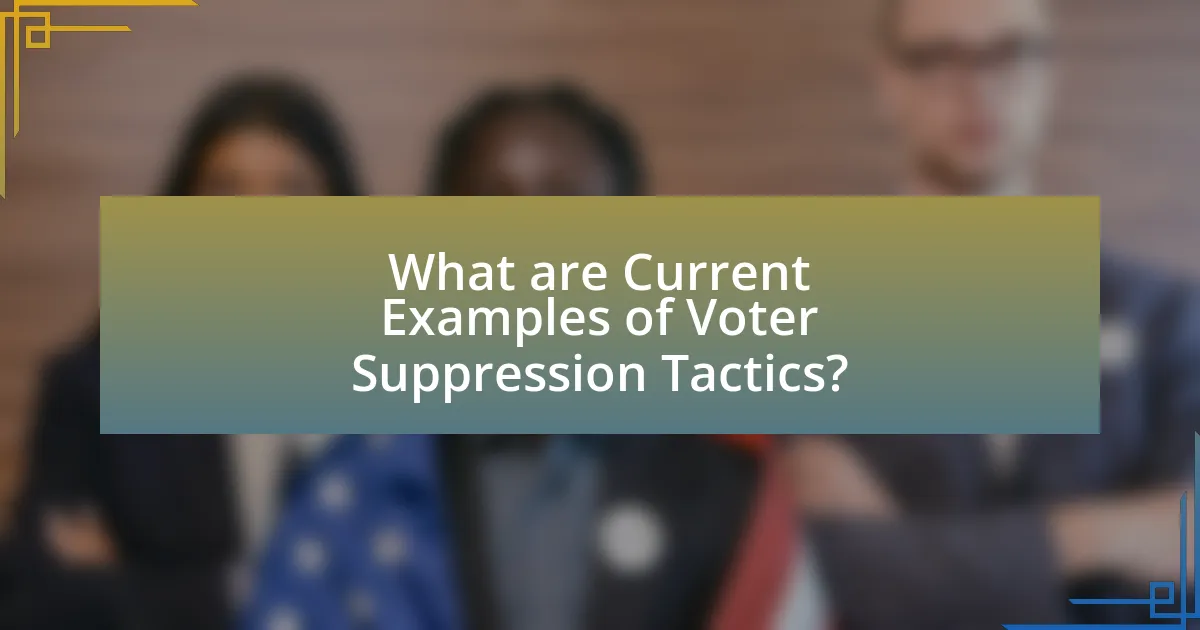
What are Current Examples of Voter Suppression Tactics?
Current examples of voter suppression tactics include strict voter ID laws, purging of voter rolls, limited access to polling places, and reduced voting hours. Strict voter ID laws, implemented in several states, require voters to present specific forms of identification, disproportionately affecting minority and low-income populations who may lack such IDs. Purging of voter rolls often targets individuals who have not voted in recent elections, leading to eligible voters being removed without their knowledge. Limited access to polling places, particularly in urban areas, results in long lines and wait times, discouraging people from voting. Additionally, reduced voting hours and fewer early voting days further restrict access, making it more challenging for working individuals to cast their ballots. These tactics have been documented in various studies, including reports from the Brennan Center for Justice, which highlight their impact on voter turnout and participation.
What modern tactics are being used to suppress voter turnout?
Modern tactics used to suppress voter turnout include strict voter ID laws, purging of voter rolls, and limiting access to polling places. Strict voter ID laws require individuals to present specific forms of identification, which disproportionately affects minority and low-income voters who may lack such IDs. Purging voter rolls often removes eligible voters based on criteria that can be misleading or inaccurate, leading to disenfranchisement. Additionally, limiting access to polling places, particularly in urban areas, results in long lines and reduced voting opportunities, further discouraging participation. These tactics have been documented in various studies, including a report by the Brennan Center for Justice, which highlights the impact of these measures on voter turnout across different demographics.
How do voter ID laws affect access to the polls?
Voter ID laws restrict access to the polls by requiring individuals to present specific forms of identification, which can disproportionately affect marginalized groups. Studies, such as those conducted by the Brennan Center for Justice, indicate that these laws can lead to decreased voter turnout, particularly among low-income, minority, and elderly populations who may lack the required IDs. For instance, a 2014 report found that states with strict voter ID laws saw a 2-3% drop in turnout among eligible voters compared to states without such laws. This evidence demonstrates that voter ID laws can create barriers that hinder equitable access to the electoral process.
What role does misinformation play in voter suppression today?
Misinformation plays a significant role in voter suppression today by creating confusion and distrust among potential voters. This misinformation often includes false claims about voting procedures, eligibility requirements, and deadlines, which can discourage individuals from participating in elections. For instance, a study by the Brennan Center for Justice found that misleading information about voter ID laws disproportionately affects minority communities, leading to lower turnout rates. Additionally, social media platforms have been identified as major conduits for spreading such misinformation, further exacerbating the issue. This manipulation of information undermines the electoral process and contributes to systemic disenfranchisement.
How are communities responding to current voter suppression tactics?
Communities are responding to current voter suppression tactics through grassroots organizing, legal challenges, and advocacy for policy reforms. For instance, organizations like the NAACP and the ACLU are actively filing lawsuits against restrictive voting laws, citing violations of the Voting Rights Act. Additionally, local groups are mobilizing voters by conducting educational campaigns about their rights and providing resources to help them navigate the voting process. According to a report by the Brennan Center for Justice, states with high levels of voter suppression have seen increased community engagement and activism, demonstrating a collective effort to combat these tactics and ensure equitable access to the ballot.
What grassroots movements are working to combat voter suppression?
Grassroots movements combating voter suppression include the NAACP, the American Civil Liberties Union (ACLU), and the National Action Network (NAN). The NAACP has a long history of advocating for civil rights and has launched initiatives like the “Vote Your Voice” campaign to mobilize voters and challenge discriminatory practices. The ACLU focuses on legal challenges against voter ID laws and other restrictive measures, emphasizing the protection of voting rights through litigation and public education. NAN, founded by Al Sharpton, actively engages in community organizing and advocacy to address systemic barriers to voting, particularly in marginalized communities. These organizations collectively work to raise awareness, provide resources, and influence policy changes to ensure equitable access to the ballot.
How can technology be leveraged to protect voting rights?
Technology can be leveraged to protect voting rights by implementing secure online voter registration systems, utilizing blockchain for transparent voting processes, and employing data analytics to identify and combat voter suppression tactics. Secure online voter registration systems increase accessibility, allowing more individuals to register to vote, which is crucial in combating historical voter suppression. Blockchain technology enhances the integrity of the voting process by providing a tamper-proof record of votes, thereby increasing public trust in election outcomes. Data analytics can identify patterns of voter suppression, such as disproportionate polling place closures in minority communities, enabling advocacy groups and policymakers to address these issues effectively. For instance, the use of online registration has been shown to increase voter turnout by up to 10%, as evidenced by studies conducted in states that adopted such measures.
What can individuals do to combat voter suppression?
Individuals can combat voter suppression by actively participating in advocacy efforts, such as joining organizations that promote voting rights. These organizations, like the NAACP and the American Civil Liberties Union, work to challenge restrictive laws and educate the public about their voting rights. Additionally, individuals can engage in grassroots campaigns to raise awareness about voter suppression tactics, such as voter ID laws and purging of voter rolls, which disproportionately affect marginalized communities. According to a 2020 report by the Brennan Center for Justice, states with strict voter ID laws saw significant declines in voter turnout, particularly among minority groups. By mobilizing their communities, individuals can help ensure that everyone has access to the ballot, thereby strengthening democracy.
How can voters educate themselves about their rights?
Voters can educate themselves about their rights by accessing reliable resources such as government websites, legal aid organizations, and voter advocacy groups. These platforms provide comprehensive information on voting rights, including protections against discrimination and the processes for reporting violations. For instance, the U.S. Department of Justice offers guidelines on the Voting Rights Act, which prohibits discriminatory practices in voting. Additionally, organizations like the League of Women Voters provide nonpartisan information about voter registration, polling locations, and voting procedures, helping voters understand their rights and responsibilities.
What actions can individuals take to support fair voting practices?
Individuals can support fair voting practices by actively participating in voter registration drives and advocating for accessible voting options. Engaging in these actions helps to ensure that all eligible voters can exercise their right to vote without barriers. For instance, according to the U.S. Census Bureau, states that implemented automatic voter registration saw increases in voter participation rates, demonstrating the effectiveness of making registration easier. Additionally, individuals can volunteer as poll workers to assist in the electoral process, which has been shown to improve the efficiency and fairness of elections. Research from the National Association of Secretaries of State indicates that having enough trained poll workers can reduce long wait times and enhance voter experience, further supporting fair voting practices.

